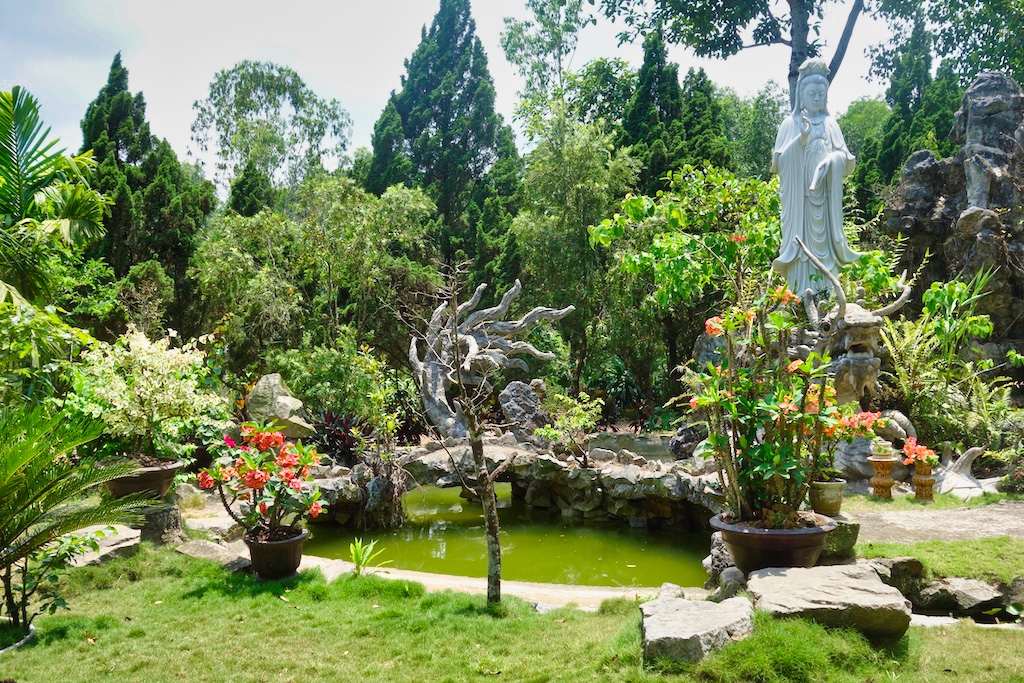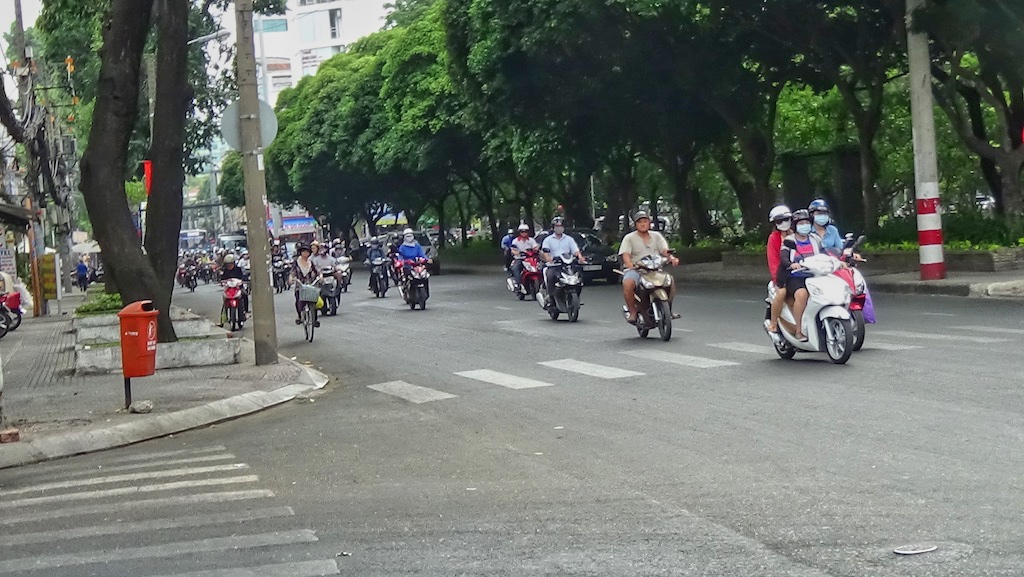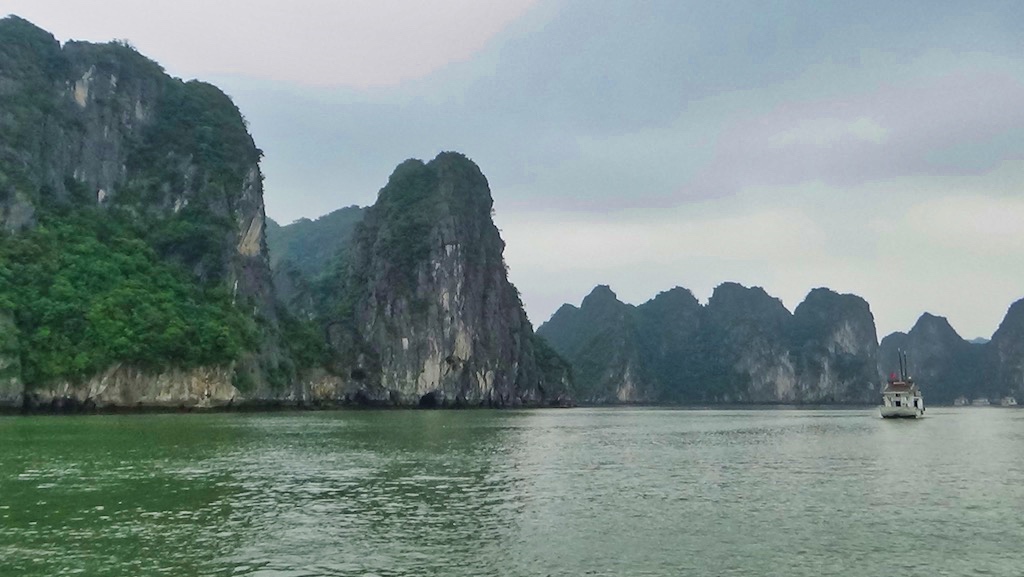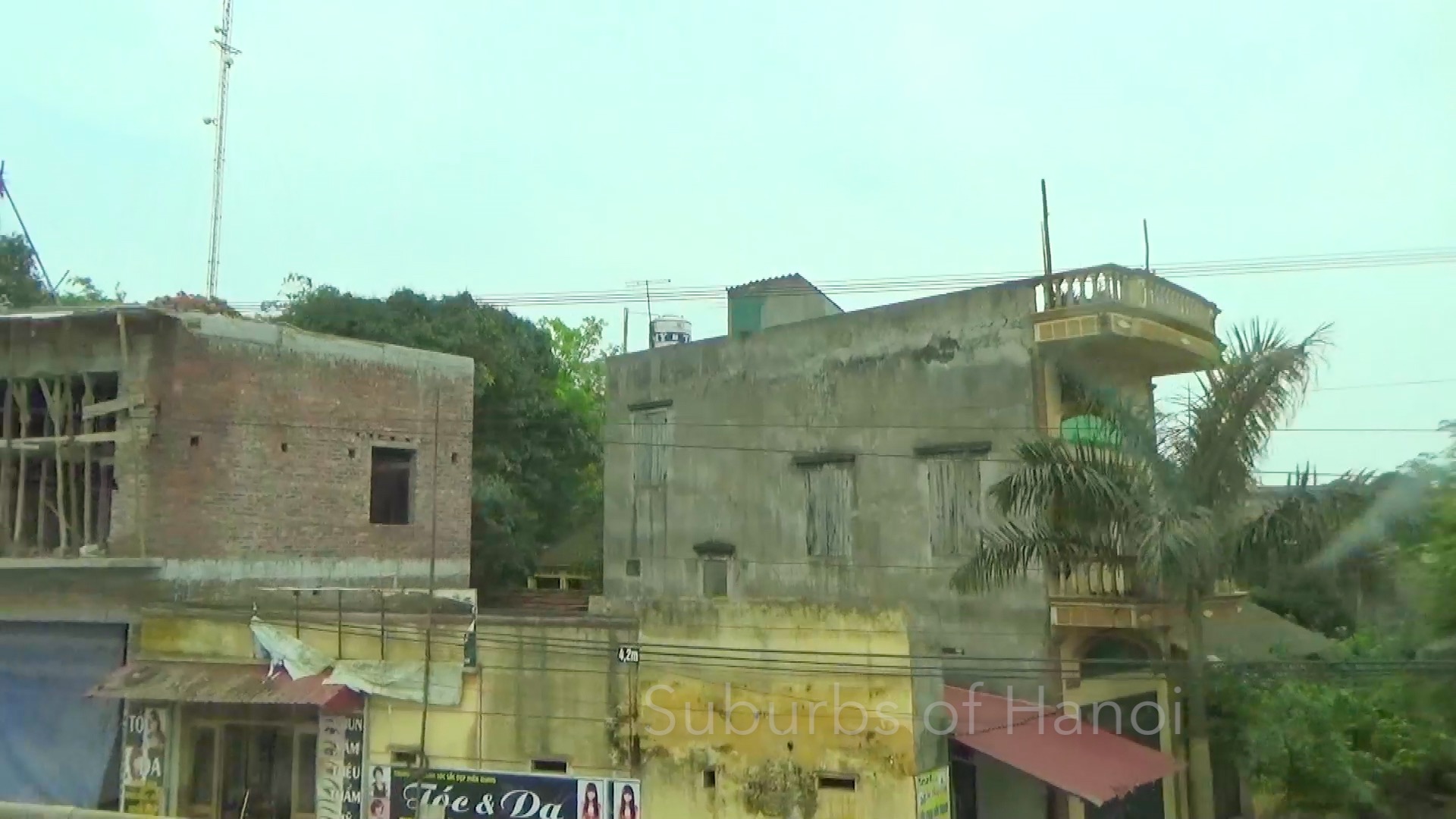Viet Nam
40 Years After . . . .
It is the evening of April 25th, 2014 when we arrive in Ho Chi Minh city, having departed from Siem Reap, Cambodia, for the beginning of a 12 day tour with Gate 1. This is my second visit and Denise’s first. Expectations differ between us; for Denise it is the discovery of a new and exotic land, for me to quench my curiosity as to what has become of the war torn country that I had last experienced in my two tours here as a soldier, 1968 - 1970. I was particularly interested in what the war had done to the psyche’s of the Vietnamese people and what feelings they still hold toward Americans. By the end of our visit both of our goals had been realized.
Saigon / Ho Chi Minh City
Wow! For a moment we thought ‘Times Square’?! Most surprising and exuding excitement! Bright lights, large screen outdoor TV’s, high end shopping, and, of course, the motorbikes. The population is 90 million in the country and 8 million in Saigon, with 25 million motor-bikes. We spent only a day and half there, though we would have liked at least 4 days. The French occupied the city in 1859 and developed it as the first western city in Vietnam. It was the capital from 1954 to 1975. The capital was moved to Hanoi in 1975 when the north won the war. Prior to this move, the capital was Hue. And yes, most residents still call it Saigon.
Hoi An
World Heritage Site
Old Hoi An is a charming quaint village recognized by UNESCO as a world heritage site. It is a well-preserved example of an Asian trading port dating from the 15th to 19th centuries. Both China and Japan controlled it at one time or another. Delightful lanes, traversed only by foot or on two wheels, lead to restaurants, shops and temples. As night came, lighted lanterns dotted the shops, streets and bridges creating a beautiful night.
Kim Bong Village
Traque Organic Village
Hue
Hue was the national capital of the South, Central, and North regions for the Nguyen lords, a feudal dynasty, until 1945. As you would expect it is full of palaces and pagodas, tombs and temples. By the time we arrived after touring the ancient relics in Cambodia and Hoi An we were frankly, ‘tombed out’. Partly because of this Hue left the least impression on us. It has everything the other places have, including the hustle and bustle of a modern city overlaying a developing country’s infrastructure, etc. but it added nothing new.
This was my second visit to Hue. The first was in the aftermath of the Tet Offensive.
Imperial City
Tomb of Emperor Khai Dinh
Thien Mu Pagoda
Ha Long Bay
After landing in Hanoi we boarded a bus and set off in pursue of James Bond as he rendezvoused with evil men and beautiful woman on one of the three thousand islands that comprise the Bay of Ha Long. It is one of the “New Seven Natural Wonders of the World”. The ride through the countryside was delightful and the accommodations that night were excellent. We spent the next very, overcast, day sailing around the bay with a stop at an island to explore a cave filled with stalactites and stalagmites.
Hanoi
You can not help but compare Hanoi to Saigon. We could feel the difference between north and south Vietnam. Folks seemed kinder, softer and gentler in the south, easily offering eye contact and smiles. Still, even in the south, they seemed not as welcoming as the Cambodians. The further north you travel the denser the population become's. Their attitude seems to be, “I’m glad you’re here enjoying our country, bringing money and sharing our history and culture with your friends but we’re seriously busy here, making a living.” (DVC)
Old Town
The city's history is tied to French colonialism - its architecture, cuisine and local culture still bear evidence of the French influence. One of our memorable meals was a lunch in a little café in old town called, “Little Hanoi”. Our French baguette sandwiches were delicious.
Down Town
As New York has Central Park, so Hanoi has a haven of serenity and beauty in the middle of hectic commerce and extreme population density. Hoan Kiem Lake Borders on Old Town and an upscale shopping and restaurant area. At the north end of the lake is the Ngoc Son Temple which may be reached by crossing The Huc (Morning Sunlight) Bridge, a graceful, red-painted wooden bridge. Ngoc Son is not just a museum, it's an active place of worship, where monks and devotees perform their religious duties. The smell of burning joss sticks pervades the air, which as a result feels thick and heavy.
Suburbs
A quick ride through the suburbs of Hanoi gave a lasting impression of how different the cultures are. Families here live above their business as they are allowed only a narrow strip of land.
© 2024 M j Mantyk Contact Me
A modern museum focused on the 54 officially recognized ethnic groups in Viet Nam opened in 1997. It includes over 10,000 items from photos to video tapes and cassettes presenting all aspects of the cultures of these ethnic groups. There is an outdoor exhibit with different ethnic houses that can be entered.


Lunch at the Dong Thien Pagoda was the highlight as it was most enjoyable. It was prepared and served by a 24 yr-old Buddhist nun who entered the monastery at the age of 10. Of course the meal was vegetarian and, prepared using pagoda-grown fruits and vegetables. Delicious!!!


































